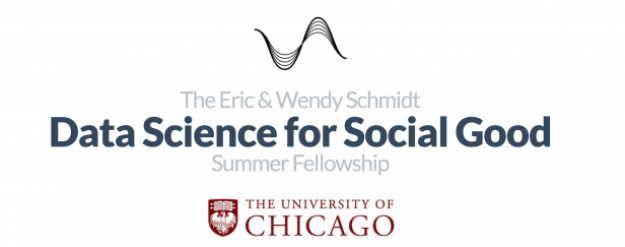Researchers develop new program for tracking influence in state bills

The process of how a bill becomes a law has long captured the public’s imagination, but now a group of researchers is trying to shed light on how policy goals end up coalescing into bills in state legislatures.
Fellows with the University of Chicago’s “Data Science for Social Good” program teamed up with the Sunlight Foundation, a nonprofit focused on government transparency, to create a new tool aimed at uncovering the source of the language that makes up state bills.
The new “Legislative Influence Detector” draws from the foundation’s database of more than 500,000 bills introduced in all 50 state legislatures, and compares those against 2,400 different “model bills” drafted by lobbying and special interest groups to track how legislation can be shaped by outside forces. The tool can also compare bills against each other to find similarities across legislatures.
Currently, the group is making data from those comparisons available on its website, and the fellows hope to have the program available to the public in an online portal, which will let users search for similarities on bills of their choice, in the coming months.
“For a journalist or a citizen, if a bill is being passed or debated in their state and they want to see where that bill comes from, either from another state or a lobby group, we want them to have a tool that easily allows them to do this,” Eugenia Giraudy, a fellow with the program and one of the architects of the tool, told StateScoop. “We don’t know that much about lobbying at the state level, so this tool is very valuable for knowing more about the dynamics of lobby groups in state legislatures.”
Giraudy and the rest of the fellows have been working on the tool since May, when staff with the Sunlight Foundation’s “Open States” project approached the collection of computer and social scientists with the challenge to find a way to uncover interest group influence at the state level.
Bob Lannon, a software developer at the foundation, notes that his group has long tracked the trend of “legislative text reuse” over the years, where legislators crib language from bills that fail to pass in order to speed the process of drafting legislation. However, he believes the influence of outside groups in this arena is a relatively recent development.
“This is not what I would call plagiarism, it’s sort of just a known tool of the trade in writing legislative text, everyone knows everyone else is doing it,” Lannon said. “But now, the word is out: Nothing gets done on Capitol Hill. So the focus has turned to winning certain victories piecemeal, going state by state.”
For the project, researchers tapped into state bill data gathered by Sunlight and collected model bills put out by advocacy groups. While many special interest groups publish documents online, Giraudy said the researchers primarily focused on two lobby groups that specialize in creating model legislation: The conservative American Legislative Exchange Council and the liberal State Innovation Exchange.
But as Giraudy’s team worked to develop the tool, they quickly realized they needed to incorporate a way to search for documents that share more than just a few words in common — instead, they started using an algorithm that grabs pieces of text from the documents and goes through word by word to find matches and mismatches.
“State legislators may change the language slightly, but that doesn’t mean that they’re not copying it,” Giraudy said. “It’s a system where there’s a combination of matches, mismatches and gaps that allows for flexibility for the algorithm to find things that might be similar.”
Giraudy said the tool has already been able to uncover some copied text in one controversial law recently signed by Wisconsin Gov. Scott Walker to ban non-emergency abortions past the 19th week of pregnancy. Bills containing nearly identical language were introduced in 41 states and passed several legislatures, the tool found. While the program didn’t have the capability to compare the text against the lobby groups’ model bills, a simple Google search traced some of the language back to a group that claims fetuses can feel pain 20 weeks after conception.
Lannon said he’s eager for the Web tool to launch publicly.
“It’s a really crucial tool for understanding this really poorly understood phenomenon,” Lannon said.
Contact the reporter who wrote this story at alex.koma@statescoop.com, or follow him on Twitter at @AlexKomaSNG.






